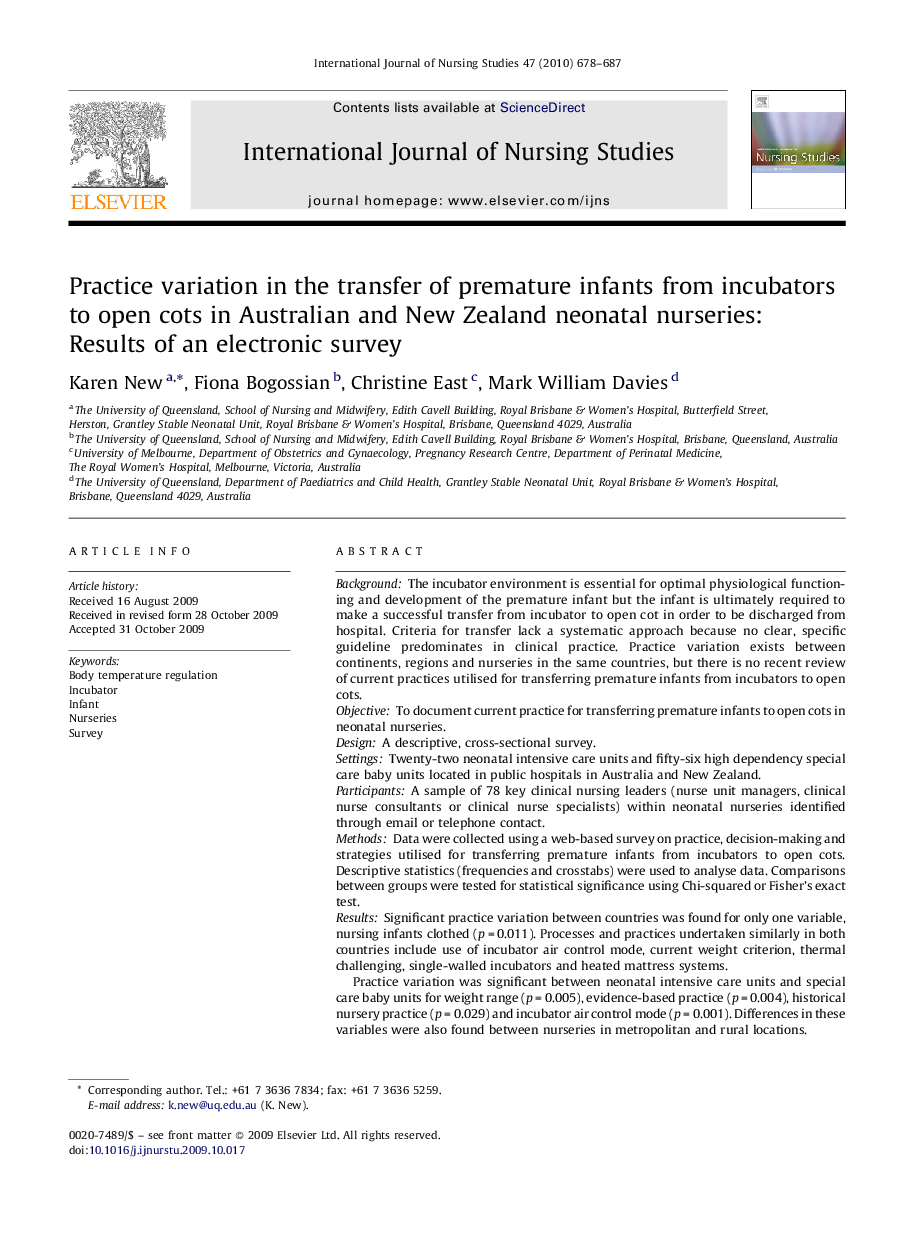| Article ID | Journal | Published Year | Pages | File Type |
|---|---|---|---|---|
| 1076967 | International Journal of Nursing Studies | 2010 | 10 Pages |
BackgroundThe incubator environment is essential for optimal physiological functioning and development of the premature infant but the infant is ultimately required to make a successful transfer from incubator to open cot in order to be discharged from hospital. Criteria for transfer lack a systematic approach because no clear, specific guideline predominates in clinical practice. Practice variation exists between continents, regions and nurseries in the same countries, but there is no recent review of current practices utilised for transferring premature infants from incubators to open cots.ObjectiveTo document current practice for transferring premature infants to open cots in neonatal nurseries.DesignA descriptive, cross-sectional survey.SettingsTwenty-two neonatal intensive care units and fifty-six high dependency special care baby units located in public hospitals in Australia and New Zealand.ParticipantsA sample of 78 key clinical nursing leaders (nurse unit managers, clinical nurse consultants or clinical nurse specialists) within neonatal nurseries identified through email or telephone contact.MethodsData were collected using a web-based survey on practice, decision-making and strategies utilised for transferring premature infants from incubators to open cots. Descriptive statistics (frequencies and crosstabs) were used to analyse data. Comparisons between groups were tested for statistical significance using Chi-squared or Fisher's exact test.ResultsSignificant practice variation between countries was found for only one variable, nursing infants clothed (p = 0.011). Processes and practices undertaken similarly in both countries include use of incubator air control mode, current weight criterion, thermal challenging, single-walled incubators and heated mattress systems.Practice variation was significant between neonatal intensive care units and special care baby units for weight range (p = 0.005), evidence-based practice (p = 0.004), historical nursery practice (p = 0.029) and incubator air control mode (p = 0.001). Differences in these variables were also found between nurseries in metropolitan and rural locations.ConclusionsPractice variation exists however; many practices are uniformly performed throughout neonatal nurseries in Australian and New Zealand. Commonality was seen between countries and in nurseries with a neonatal intensive care unit. Variation was significant between neonatal intensive care units and special care baby units and nurseries in metropolitan and rural locations.
